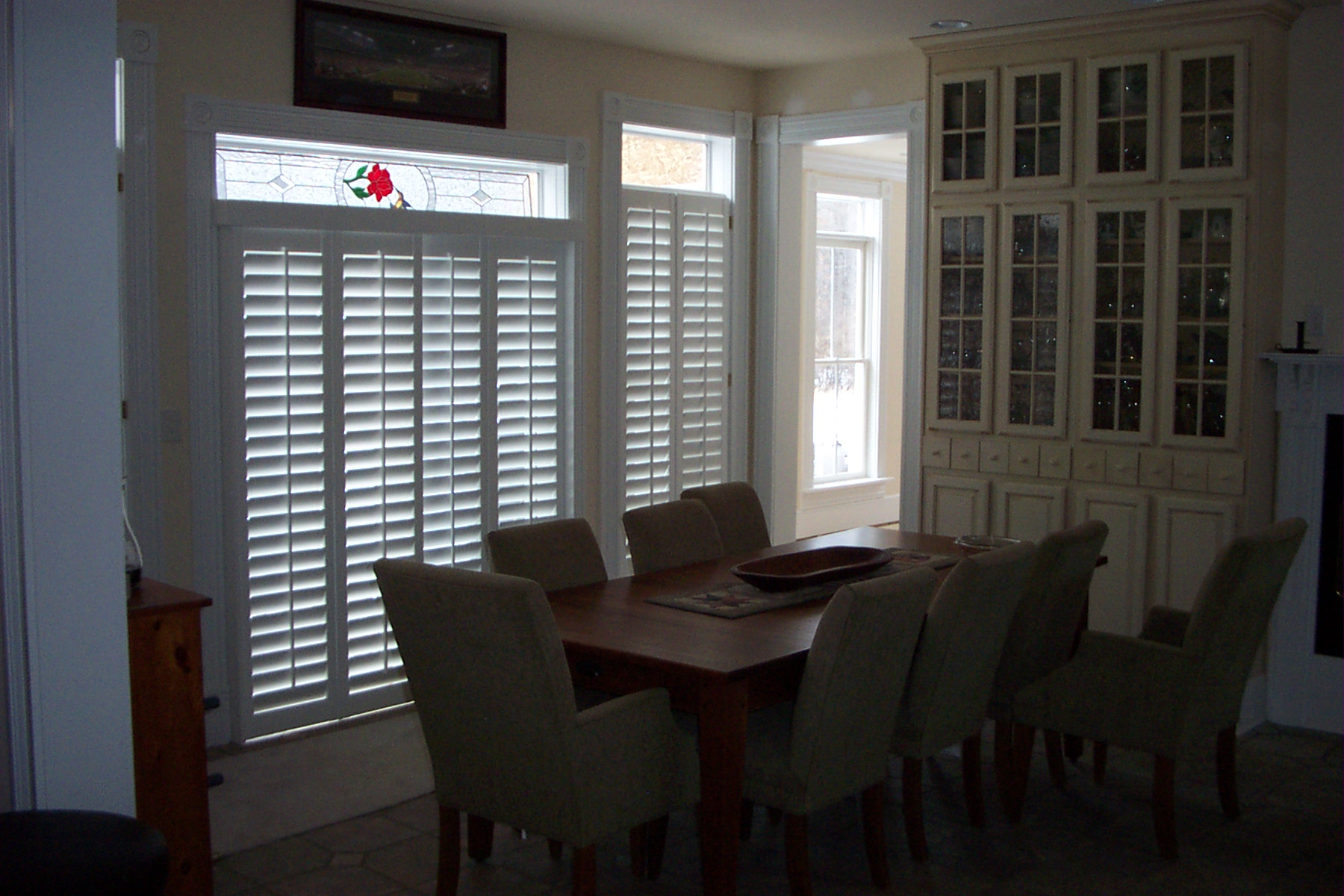
To understand the history of shutters you have to realize the first shutters were in Ancient Greece. Not surprisingly shutters from that era were made of marble. Designed for light control and ventilation, they also provided a modicum of privacy. However, as one would expect, they were heavy and immovable.
History of Shutters
Tudor England, in the 1500’s, saw the common use of solid timber shutters that covered the lower half of windows. In those days glass was an expensive commodity; the lower classes only had glass panes on the top half of their windows. To let in air and light, one had to fold the shutter panel against the wall. They provided security and protection from heat and cold.
Needless to say, the wealthier classes could afford glass and showed off their largesse by installing many small windows in their homes (Tudor style).
A few hundred years later, shutters became full height on windows as the affordability of glass for the masses was more widespread. Walls were so thick, it was common to have internal shutters that could fold away into side cavities in the walls when not in use. Exterior shutters were too difficult to reach for closing.
Shutters in the 19th Century
From the early 1800’s shutters became attached to the exterior of houses and walls became thinner. In early Colonial times, shutters were widely used on all types of dwellings. They provided successful protection against the harsh sun and heat of the colony. Of course the wealth of the home owner dictated the elegance of the shutter; emancipated settlers had to make their own louvers, whereas the well to do could afford more tailored solutions.
The Industrial Revolution introduced new manufacturing techniques so that shutter panels could be made with flat louvers. These slats could be angled to filter light and assist ventilation. They also protected the windows themselves from the elements. Of course they were made of local timbers and were durable and very thermal. In particular, big plantations in the southern US states actually led to the term, “plantation shutters”. A term applied as shutters were commonly used on the grand style facades to protect the structure from the elements.
Historical vs. Modern
In the 21st Century, shutters are used worldwide both inside and outside. The biggest difference is the materials used, which range from high tech plastics, to timbers and aluminium. Heritage homes still cry out for the authenticity of timber panels, whilst the more modern home can accommodate wider panels in a variety of materials.
As the history of shutters show the benefits are far reaching: privacy, light control, ventilation, protection from the elements. They also add another benefit: visual appeal. Correctly installed shutters can look spectacular and add huge value to your home, whether internal or external.
This article, by Lucia Van Gerwin, originally appeared in Sourcable in November, 2016.
Leave a Reply